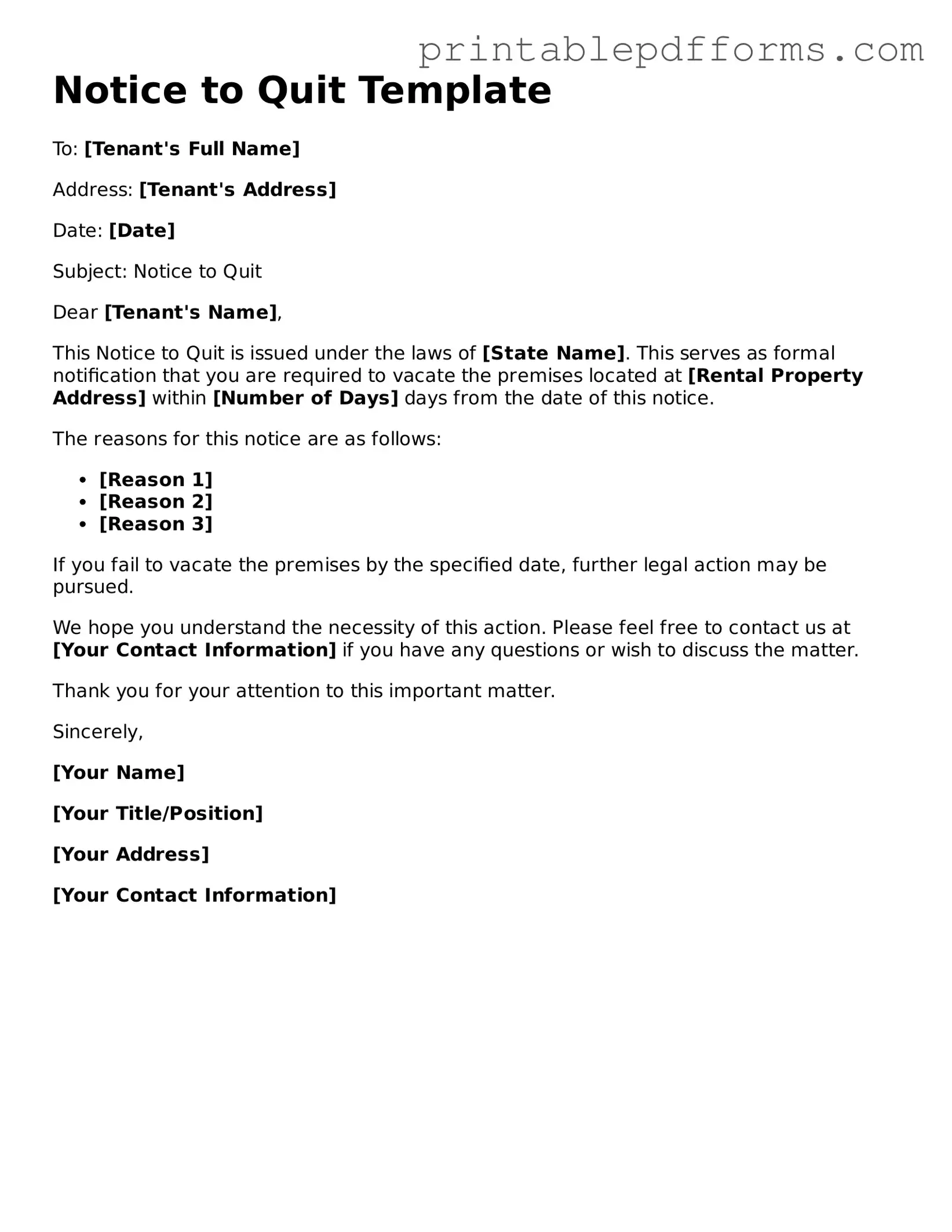Blank Notice to Quit Form
The Notice to Quit form is a legal document used by landlords to inform tenants that they must vacate the rental property. This notice typically outlines the reason for eviction and provides a timeline for the tenant to leave. Understanding this form is essential for both landlords and tenants to navigate the eviction process effectively.
For further assistance, consider filling out the form by clicking the button below.
Create This Document Online
